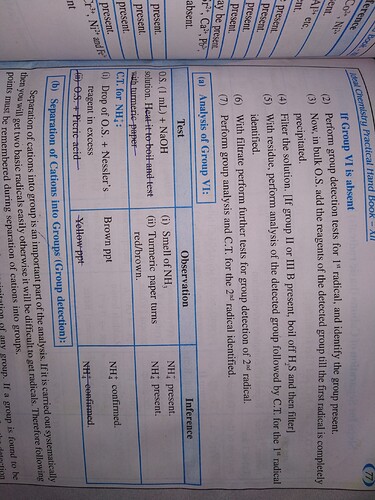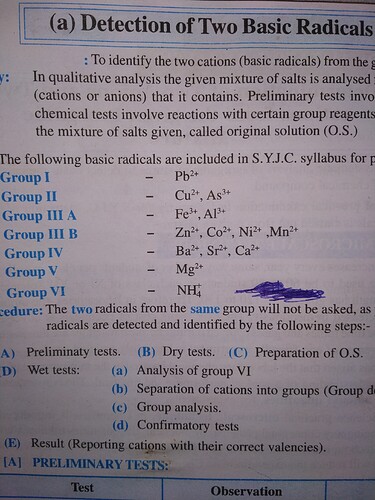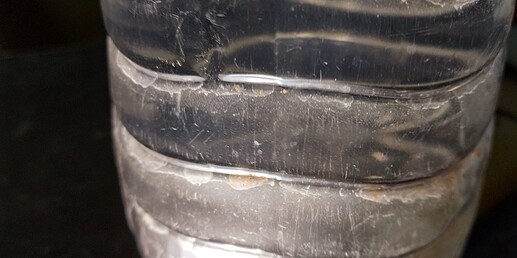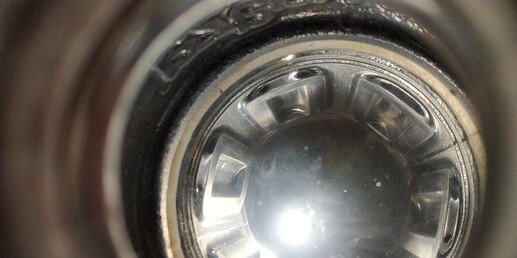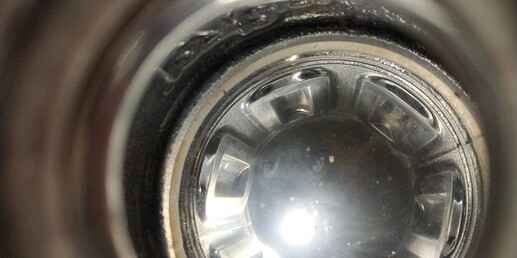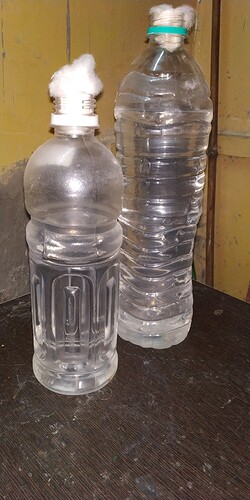The only perpose of the app is to note the R G B values of the light coming after passing through the sample. And we can note down the values and then we can calculate absorbance using the intensities.
Beer-Lambart Law states that the absorbance is directly proportional to the length that the light travels through the container and the concentration of the absorbing compound in the medium.
Absorbance = epsilon (constant) * concentration * Length of the light that passes through the medium
Absorbance is an phenomena due to electrons ( hence a electric phenomena ). In higher concentration the charge density of the substance that is going to absorb is affected due to interaction with the solute and other potential molecules that might be present. Hence Beer’s Law fails for around >10mM
I haven’t found a source that makes it possible for us to cope with it.
We can either use that or the defination of absorbance which is
log [ I / I (with zero concentration) ]
Ask for any explanation if needed and try the experiment as soon as possible.
Is it as simple as, when concentration of solute increases, there can no longer light pass through the solution, hence difference between higher concentrations cannot be determined…
In that case one can dilute the samples first and then detect the concentrations…
@jaikishan No actually it is a bit more complicated than that. See the electrons absorb and emit radiation as they jump between energy states. The whole spectrum of light when shown some of the parts in the spectrum will be missing which will be the radiation absorbed by the electrons of that particular element.
When charge distribution is affected we are talking about affecting electrons and hence affecting the absorption of light by that molecule. So there is error in our results and a divination from the law is observed.
Why not see is there a range of concentration where Beer Lamberts law works?
That will help to know sensitivity of colorimeter…
Ya I saw it as I said above it works for concentration levels lesser than 10 mM
That is good enough for measuring almost all chemicals in moina culture… ![]()
We should try this test as soon as possible then we can move to measuring oxygen and Ammonia levels.
This are the pics about Ammonia detection from my chemistry handbook
Other radicals that we have detection for in the syllabus are
When and how are you planning to do this ? If you will start many more too will start seeing you…
list out whatever will be needed so that material can be procurred.
Schedule a suitabl day for doing the tests.
For the colorimeter experiment we only need a printout of a Color compliment of what the solution’s color is after adding reagent. It would be better if we will be dealing with RGB colors only so we will also need a suitable reagent.
So basically ;
- Printout of a color compliment to the solution
- Proper reagent
Will need a specific name to check availability in HBCSE or order.
1450-79940502049B.pdf (159.1 KB)
- Griess Reagent { 2% (w/v) sulfanil-amide, dissolved in 5% HCl or H3PO4 and 0,1% (w/v) aqueous solution of N-(1-naphthyl) ethylene-diamine, dihydro chloride (NEDA) }
- Vanadium(III) chloride {VCl3} ( to reduce Nitrate to nitrite since Griess Reagent doesn’t help in detection of NO3)
- Nitrite to make solution of known molarity. If not readily available can also be done by oxidation of nitric oxide.
Please state what reagents are required for detecting ammonia?
Most of them are available in any college lab?
Why not start with detecting ammonia?
Please also give status of your moina cultures?
How many moina do you have?
How are you maintaining them?
please send some pictures of your cultures…
What is the turbidity? Is it increasing, can we measure turbidity as already makers lab has made turbidometer you can take the help, to know turbidity of your cultures
NaOH and Nessler’s Reagent.
I think all of them are available a college labs.
Ya we can detect ammonia but the thing is measuring all things at once will help in correlating the intertwined factors. If we first measure ammonia in first sample and then measure nitrate and nitrite in other sample then we loose the correlation since those measurements didn’t came from the same sample and same conditions.
My Moina cultures are growing great.
Currently I have two bottles there around 10 in one bottle and 2-3 in another.
As you said I have created one more bottle but due to less numbers I haven’t created many.
@jaikishan here are some photographs.
Turbidity is the measure of the loss of transparency of water. The greater the transparency the lesser the turbidity and vice versa.
Ya it increases in Moina bottles due to the daily addition of milk.
Ya we can measure the loss of transmitted light as murkier water will scatter the light more due to the particles in it.
Ya we can use it. It is great that it is readily available. I am also wondering that whether the one we made in the lab could be made in any college labs. If not then we can use it for now but we would need a better alternative to it.
What? is it not very less numbers?
When did you start the culture? what is your expectation about the number of moina?
Is it corelating with the hypothesis made by you at the begginning in a graph of no.of moina vs days?
why dont you show your moina reading in a graph, and is it matching with your initial expectations?
why not initiate it? what is the plan of work? when are you starting in your college?
They may have been possibly just born because they were very small compared to other moinas so I think that’s the reason for there small growth rate in the beginning.
I started my culture this Monday. It is correlating with the beginning of the graph I can’t verify for the graph ahead because I am currently just focusing on increasing there numbers and developing a stable supply of moinas.
I will do that and send soon. I have currently been busy because of exams arriving and project and assignment pending. But I will do that and soon get back to you.
As I informed you that I won’t be having access to college labs due to lack of staff because of something related to election in college and exams for degree colleges being carried out.
